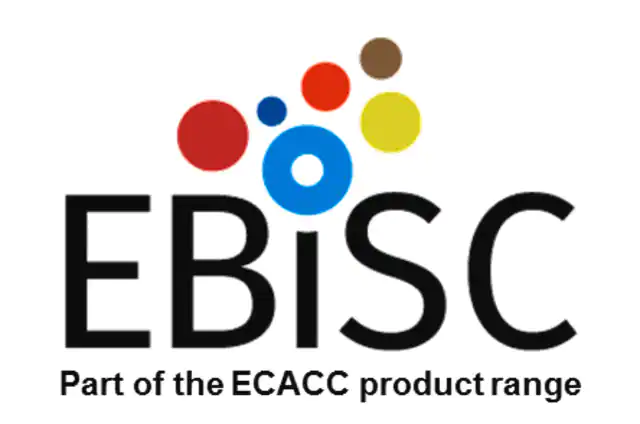您的位置:首页 > 产品中心 > EDi001-A-2
产品性质
| biological source【生物来源】 | human |
| reprogramming method【重编程方法】 | retrovirus |
| description【描述】 | age (N/A) |
| manufacturer/tradename | EBiSC™ |
| gender【性别】 | female |
| growth mode【生长模式】 | adherent (pluripotent) |
| technique(s) | cell culture | stem cell: suitable |
| relevant disease(s)【相关疾病】 | Parkinson′s disease |
| shipped in【运输】 | dry ice |
| storage temp.【储存温度】 | −196℃ |
基本信息
| General description【一般描述】 | Induced pluripotent stem cells (iPSCs) are adult cells that have been reprogrammed to an embryonic stem cell–like state. The cells can replicate indefinitely or, under controlled conditions, can be differentiated into any other cell type such as nerve, heart or liver cells. Medical researchers are able to use iPS cells to test how different patients might respond to new drugs or to analyse how genetic diseases develop. The EBiSC stem cell bank is a collection of human iPS cells available to academic and commercial researchers for use in disease modelling and other forms of stem cell research. The initial collection has been generated from a wide range of donors representing specific disease backgrounds and healthy controls. EBiSC has established many routine procedures for collecting, expanding and characterizing human iPS cell lines. The stem cell bank includes iPSC cell lines derived from neurodegenerative diseases (Alzheimer′s Disease, Parkinson′s Disease, Dementia, Motor Neuron Disease (ALS) - and Huntington′s Disease), eye and heart diseases, and lines from healthy control donors for age and sex matching. |
| Cell Line Origin【细胞系来源】 | Depositor University of Edinburgh |
| Cell Line Description【细胞系描述】 | Derivation Primary cell type: - Reprogramming method Vector type: Integrating Vector: Virus Virus type: Retrovirus Gene list: KLF4 MYC POU5F1 SOX2 Have the reprogramming vectors been silenced: Yes Merthods used: rtpcr Xeno free conditions: no Derived under gmp: no Available as clinical grade: no Characterization Microbiology / Virus Screening HIV 1: Not done HIV 2: Not done Hepatitis B: Not done Hepatitis C: Not done Mycoplasma: Negative Sterility Inoculation for microbiological growth: No Contaminants Detected Mycoplasma: Not Detected Viability: Viable post-cryopreservation Genotyping STR/Fingerprinting: A 16 allele profile has been recorded and data is available upon request, after cell line purchase. Genetic Modification Disease/phenotype related modifications Disease: Parkinson′s disease Details: This is a PD line, with the control being NAS lines and CRISPR/Cas9-corrected AST22 lines Type of modification: Gene knock-out Gene: SNCA Chromosome location: 4q22.1 Delivery method: CRISPR-associated (CRISPR/Cas) System Description: CRISPR/Cas was employed to create a mutation in Exon2, disrupting the ATG start site and some sequence 5′ to the coding start of SCNA. PCR amplicons of the CRISPR site were cloned using the TOPO cloning technique. Sequencing of 8 TOPO clones detected 2 deletions and 1 insertion; however, sequencing of the CRISPR sites shows that only one of these modifications disrupts the ATG site. This indicates 1 allele was putatively knocked out, and 3 alleles remain. Additional comment: there are two additional ATG sites located immediately downstream of the normal ATG start site, one of which is in-frame (9 bases) to the initial ATG. It is possible that inactivation of the first ATG start site might not be completely sufficient to prevent translation from a second downstream ATG. |
| Linkage【联系】 |
Note: EAUA and CLIP must be completed before order fulfillment |
| Subculture Routine【传代培养常规】 | Medium: mTeSR® Passage method: EDTA Matrix: Matrigel® / Geltrex® CO2 concentration: 5% O2 concentration: 20% Temperature: 37℃ |
| Legal Information【法律信息】 | EBiSC is a trademark of Fraunhofer-Gesellschaft GELTREX is a registered trademark of Life Technologies Corporation Matrigel is a registered trademark of Corning, Inc. mTeSR is a registered trademark of WiCell Research Institute, Inc. |
安全信息
| Storage Class Code【储存分类代码】 | 6.2 - Infectious substances |
| WGK | WGK 3 |





